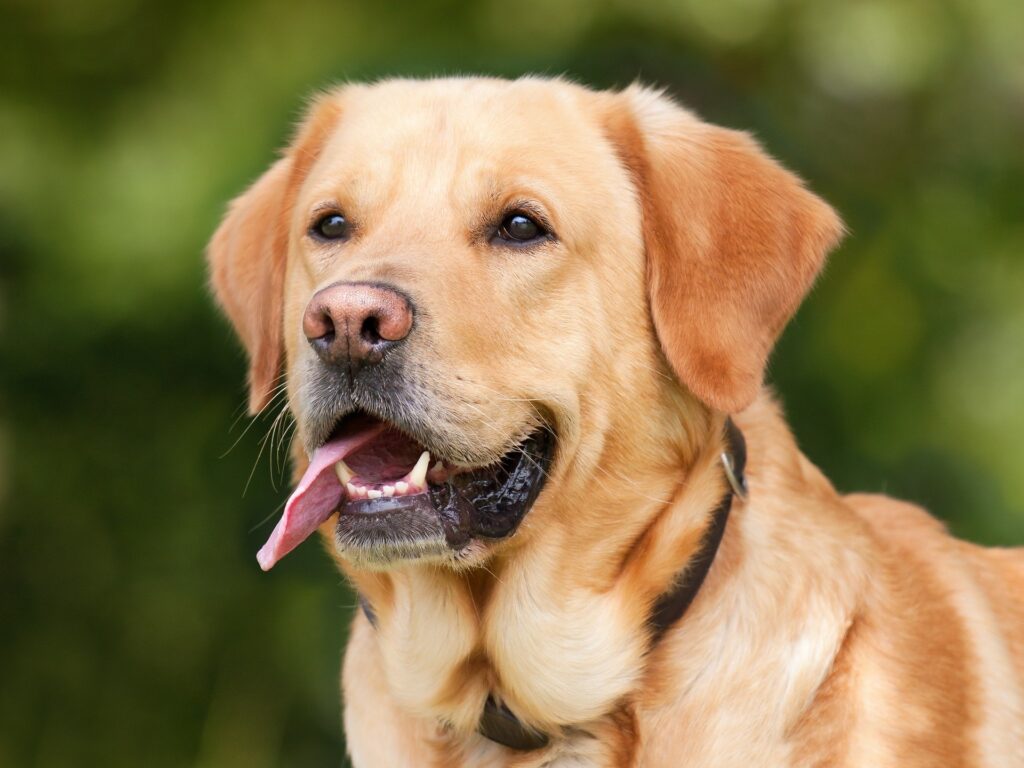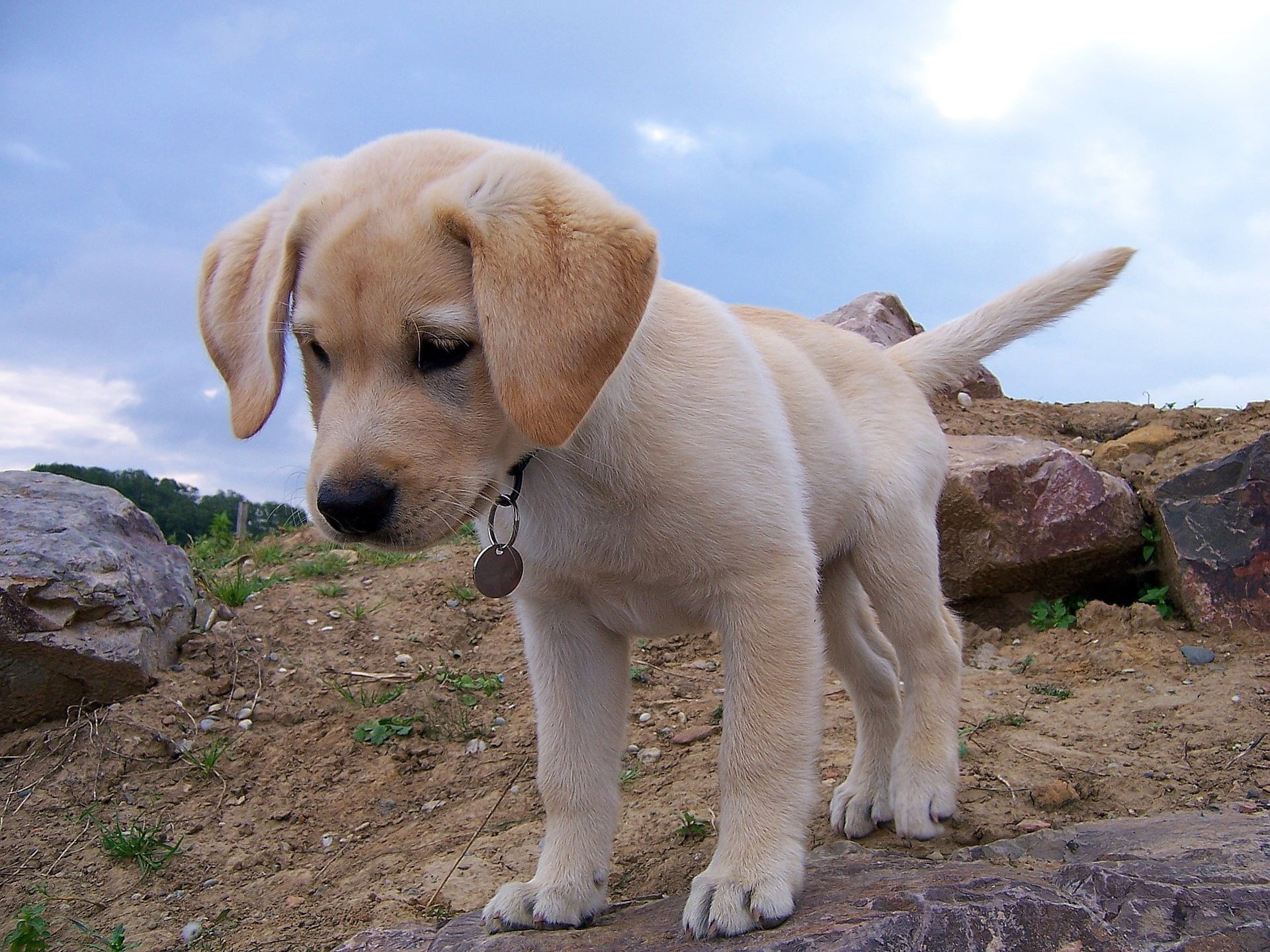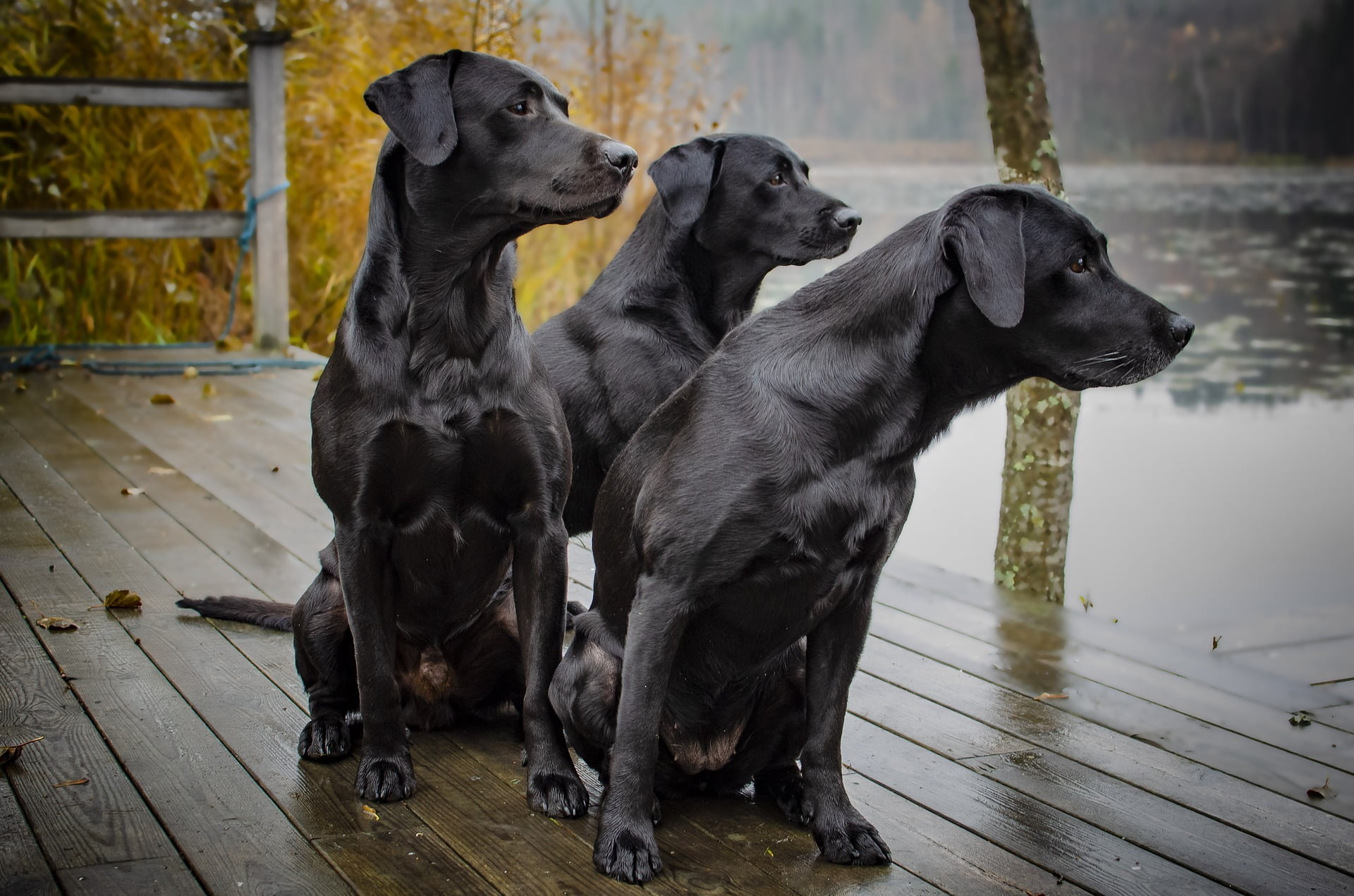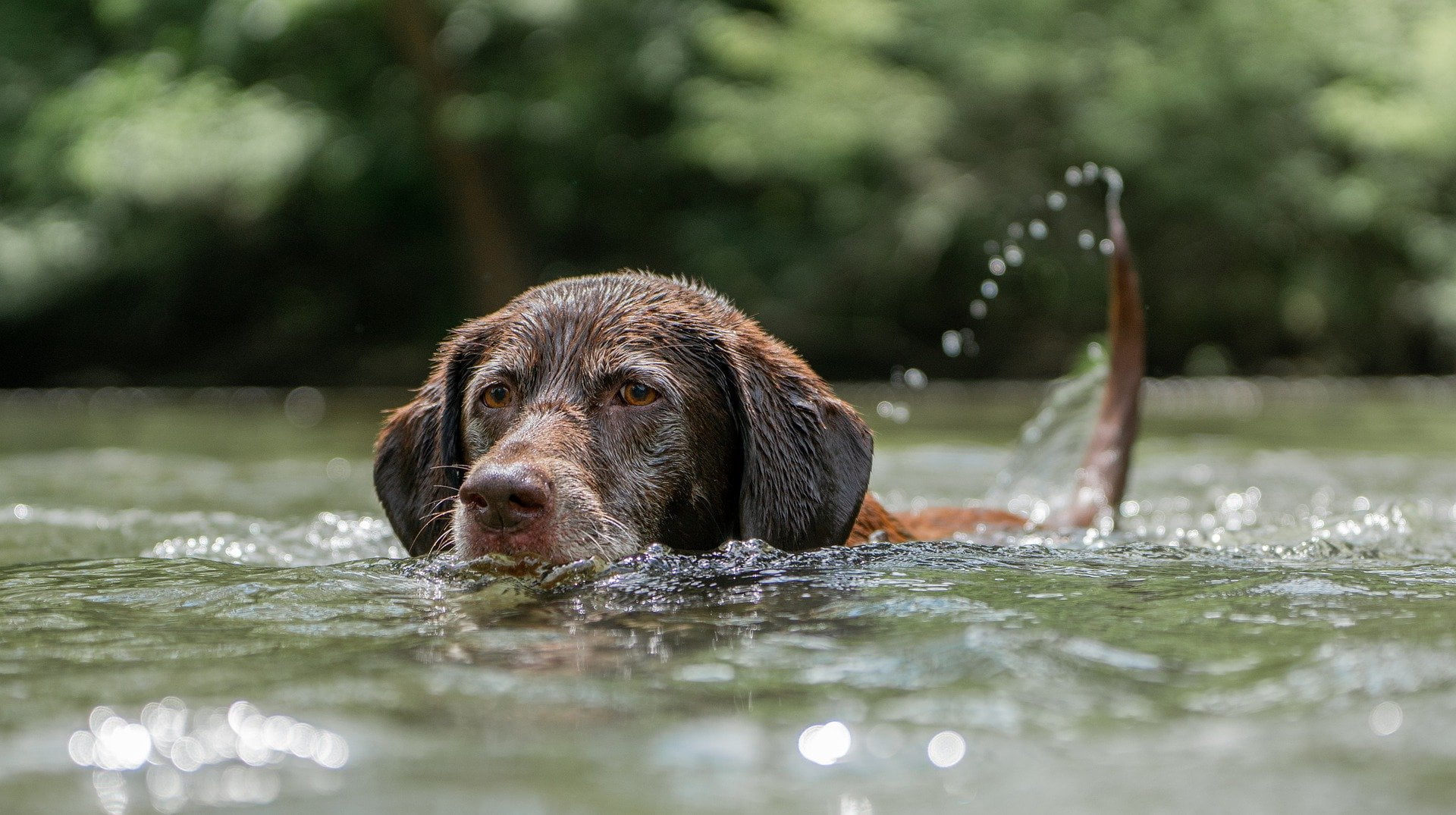
- Home
- Stud Dogs
Some of our most popular Stud Dog Breeds:
- Puppy Litters
- Dog Services
- Dog Breed Profiles
- Blog
- Contact Us
Labrador Dog Breed Profile

The Labrador Retriever is possibly the world’s most popular breed of dog – and no wonder. The Labrador is devoted, affectionate and lovable, making him an ideal family pet. He is good with children, visitors and other pets, and will happily adapt to household upheavals such as house moves. His only demand is that you show him plenty of love – which he will return in droves.
Labradors are intelligent, obedient and fiercely loyal, with an inbuilt instinct to protect their owners from danger. This has made them the world’s most popular assistance and rescue dogs – they’ve even been employed as life guards.
Of course, the Labrador’s association with water is legendary. This instinct is deeply rooted; as pets, Labs have been known to “rescue” owners they perceive to be out of their depth!
Typical Labrador Facts
Height: Male 56 – 70 cm (22 – 28 in) / Female 54 – 60 cm (21 – 24 in)
Weight: Male 27 – 36 kg (60 – 79 lb) / Female 25 – 32 kg (55 – 71 lb)
Average litter size: 7 – 12 pups
Life expectancy: 12 – 16 years
Good with children: Yes
Kennel Club classification: Gundog
Colour of a Labrador
Labrador comes in three colours: solid black; chocolate (which also includes silver and charcoal) and yellow. Yellow Labradors (sometimes wrongly labelled as golden) show the most variation, with colours ranging from pale cream to red fox. All three colours can occur in the same litter.

Grooming a Labrador
The Labrador’s coat is short, thick and harsh to the touch, straight without any feathering or waviness, and with a dense, water-resistant undercoat.
Labradors are prolific shedders, growing and shedding a coat twice a year. Although they are active self-groomers, it’s important to give them a good brush every 2 weeks, once a week when they are shedding.
The Labrador’s love of water is extensive, and he will leap into anything – including big, muddy puddles. However, this isn’t a problem as he also loves a good bath!
Labrador Common Ailments/Health Issues
The Labrador is a healthy breed with few major problems. The major concern with Labradors is obesity: Labs love treats, and their large appetite and endearing manner means it’s easy for them to become overweight. This isn’t helped by the fact that, although Labradors are active and energetic outside, they tend to be pretty lazy once they’re indoors!
Obesity should be avoided, as it can lead to diabetes, kidney problems and hip and elbow dysplasia. However, Labradors suffer dysplasia less than other breeds, and sensibly fed dogs should not develop a problem.
Labradors can suffer from luxating patella, a knee problem that is identified by bowlegs. They can also develop retinal atrophy and other eye problems as they get older. However, these problems are largely genetic, and can be avoided by buying puppies from reputable breeders.
Due to their floppy ears and love of water, Labradors are prone to ear infections. These are easily avoided by regular cleaning – some owners clip back the hair around the ears, which helps.
Temperament of the Labrador
The Labrador is a playful, lively, and affectionate breed, who enjoys lavishing attention on his owner. A superb dog to have with children, he will happily chase a stick or ball all day, and loves playing near – or in – water.
A Labrador’s loyalty and alertness also makes him an excellent watch dog, without the aggressiveness of guard dog breeds.

Training a Labrador
You need only think of Guide Dogs for the Blind, and the Andrex puppy adverts, to see how easy Labradors are to train. Originally bred for hunting and water retrieval, they are intelligent and obedient, reacting quickly to commands.
Labradors excel at dog shows and agility events, and love to show off – making them great for movie and TV work. However, Labradors can be a problem if they are left unneutered. Then, they can develop “wanderlust,” and if they’re given the chance to escape will make a beeline for old haunts – however far away they are.
It’s best, therefore, to get your Labrador neutered as soon as possible, if he’s not being used for breeding.
Exercise for a Labrador
Labradors were bred as working dogs. They are naturally active when outdoors, and should be taken out at least once a day so they can have a romp. Labradors are inclined towards obesity and can soon become lazy if not encouraged otherwise.
Being retrievers, Labradors will happily fetch and carry all day long. A stick or a ball in a local park will do just as well as a long hike. They love swimming, and this is a great form of exercise for them.

History of the Labrador
The origins of the modern Labrador dog lie in Newfoundland, near Labrador. They originated from an old Newfoundland breed, called the St John’s Water Dog, which separated into two strains. The larger was used for hauling, and became the Newfoundland. The smaller, short-coated form was used for retrieving and pulling nets from the water, and was the forerunner of today’s Labrador retriever.
In the 1800s, a number of short-coated St John’s dogs were brought back to England by visiting Newfoundland fishermen. These dogs, which were mainly black, became popular with the local gentry, who trained them to hunt on their estates. The name Labrador retriever was coined, and was in regular use by the 1870s.
The earliest Labrador dogs were black. Although both yellow and chocolate St John’s dogs had been noted in the 1800s, where these colours occurred in Labrador pups they were culled.
The Earl of Malmesbury and Duke of Buccleuch were instrumental in developing the modern Labrador in the 1880s, when Malmesbury donated two of his dogs – Avon and Ned – to the Duke’s breeding program. The first official yellow Labrador was born in 1899, and by the 1930s the first chocolate Labradors had appeared. The Labrador breed was recognised by the UK Kennel Club in 1903 and by the American Kennel Club in 1917.
Up to the mid-20th century, yellow Labradors were a dark, golden colour. These dogs were called Golden Labradors, until the UK Kennel Club changed this to yellow, saying “gold” wasn’t actually a colour. The preference for a paler yellow then predominated, although there was a resurgence of interest in the darker shade in the 1980s.
Today, there are two Labrador lines – the field-bred or American Labrador, and the show-bred or English Labrador. The former is more suitable as a working gundog, while the latter is best suited as a pet.
Many people get the Labrador Retriever mixed up with the other retriever dog breeds, such as the Golden Retriever. See ‘What is the difference between a Labrador and a Golden Retriever?’
Famous Labrador dogs
The Labrador service dog Endal, who died in March 2009, was an ambassador for assistance dogs, and has been coined the “most decorated dog in the world.”
The movie “Marley and me” was based on the true-life story of a Labrador owned by writer John Grogan.
i am intrested to buy a labredor puppy please conact me on my email id or u can contact me on my cell no. 9892262063 [ parth]
[…] dog whisperer tickets cost £40, but that didn’t stop the couple’s Labrador from setting about them in a blatant attempt to avoid the show altogether. Mike was concerned that […]
THANK YOU SO MUCH FOR ALL THIS INFORMATION; IT HAS BEEN THE BEST I’VE FOUND SO FAR. MY HUSBAND AND I ARE BLESSED WITH A 11 WEEKS OLD LABRADOR RETRIEVER NAMED CINDY-RELLA. SHE IS GREATEST WEE FRIEND, BESIDES THE 2 TOY BLACK POODLES WE’VE HAD UNTIL THE LITTLE PRINCESS {GYPSEY} WENT THROUGH THE GATE ON DEC. 23, 2009. MY HEART IS STILL BROKEN BUT LITTLE CINDY IS A GIFT FROM GOD TO HELP US HEAL.